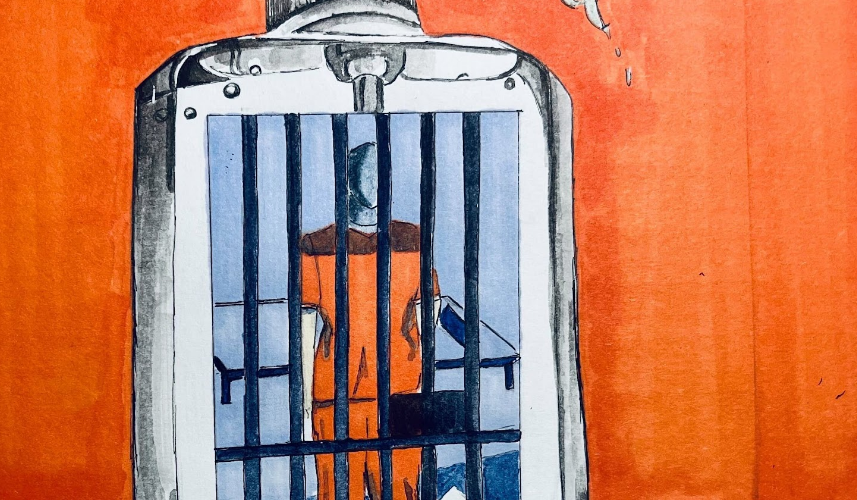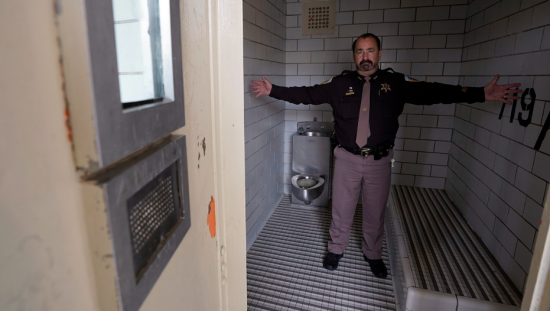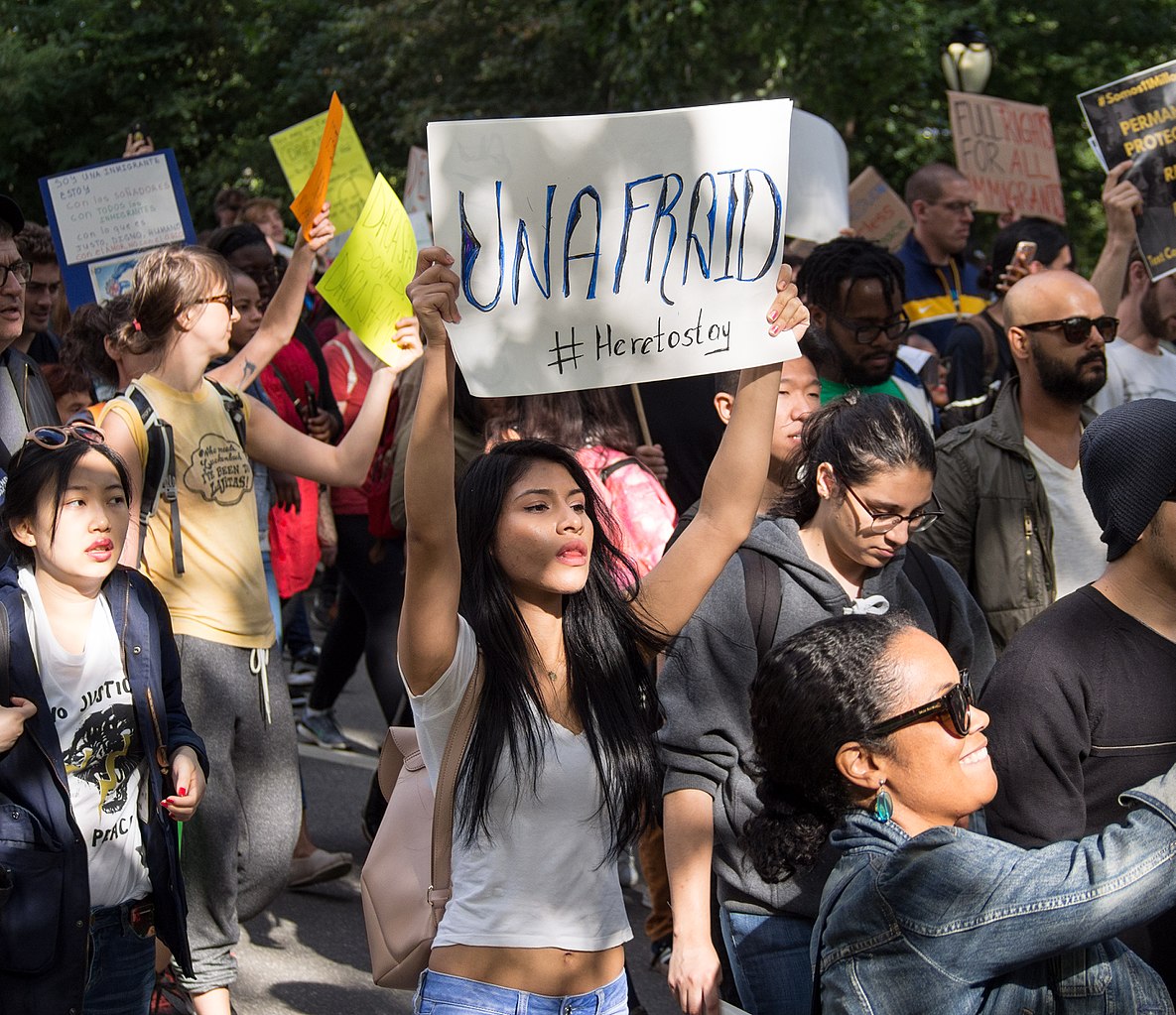On January 26, 2021, President Biden issued an executive order declaring that the federal government will eliminate its reliance on private prisons in an attempt to reform our deeply broken incarceration system. With this order, the federal government would sever its ties with for-profit detention facilities, aiming towards a more ethical system focused on rehabilitation. However, eliminating private federal prisons fails to address the problematic prison labor market, an issue present in the public system as well.
Theoretically, the very nature of prison is to keep citizens from stepping outside of the carefully-constructed boundaries of the law. The prison-industrial complex conflates bureaucratic, political, and economic interests, setting up a system rooted in punishment, fear, and labor exploitation.
The pandemic gave prisons an opportunity to exploit inmate labor in the production of essential goods, increasing the role of the prison-industrial complex. However, in the midst of an unstable, recovering economy, government officials and citizens may be hesitant to push for any drastic reform policies—even if it means making reparations to inmates who worked for unlivable wages in hazardous conditions to keep us safe. In fact, while prison reform proposals have the potential to change the way prisons operate for the better, they can also produce unintended consequences.
The Emergence of Prison Labor
When prisons were first established in the US in the eighteenth century, officials were primarily concerned with construction and maintenance costs. Officials covered the costs of incarceration and even produced additional profits by using prison labor. With involuntary laborers at their disposal, prisons became similar to monopsonies, which are markets characterized by one buyer and multiple suppliers. In this case, inmate workers act as the labor supply and prisons act as the singular buyer with complete control in setting prices.
According to the World Prison Brief, the US has the highest incarceration rate in the world at 629 inmates per 100,000 people and a total prison population of 2.1 million. In the last nationwide prison census, in 2005, around 1.5 million inmates were required to work involuntarily. Now, individual prisons and state legislatures have the power to publish these statistics without central oversight, blinding the public from definitively knowing how many prisoners are forced into labor.
With millions of people at their disposal, prison officials discovered a new way to profit off of exploitation and abuse—one embedded into the fabric of our nation. The Punishment Clause of the Thirteenth Amendment holds that slavery can be condoned only as punishment for committing a crime.
During Reconstruction, Southern states used the Punishment Clause as a loophole to maintain a plantation economy. In conjunction, the 1872 Supreme Court Slaughter-House Cases upheld the Punishment Clause, as Justices Joseph P. Bradley and Samuel Freeman Miller argued that the actions of private organizations and the state are separate from the eradication of slavery. The decision effectively pronounced that not all individuals are guaranteed economic freedoms under the Thirteenth Amendment.
The rise of prison labor was followed by growing unrest among major corporations. These arguments were economic in nature and the inhumane aspects of prison labor were largely ignored. In theory, prison labor is a subset of government economic activity, which has the potential to crowd out, leaving little room for private transactions. Prisons found a way to keep big firms satisfied and supportive of prison labor by becoming low-cost suppliers. Prisons became undercover monopolies for niche industries like military jackets and blue jeans. When firms use prison labor to produce goods, they have a greater deal of financial leverage relative to other major firms who are required by law to pay fair wages. As a result, prisons started using labor to produce supplies for the firms who were previously upset by prison profitability.
The Growth of Prison Labor
Prison labor became more prominent over time with the support of large corporations. Major companies like Microsoft and Victoria’s Secret capitalize off prison labor with a minimal amount of media backlash, while brands like Prison Blues have made prison labor a key aspect of their brand identity. In the past, farmers and other agricultural workers were also encouraged to use inmates to fill their “labor void” and minimize their production costs in the process.
But no matter how many companies and industries we single out, there is a lack of centralized oversight regarding the prison-industrial complex in the US. This makes it virtually impossible to determine the scope of what commonly used products incorporate prison labor into their supply chains.
More recently, over twenty states used prison labor to produce pandemic supplies like masks, hand sanitizers, and gloves. The pandemic led to a market shortage of these goods—where there wasn’t enough supply to meet rapidly growing consumer demands—incentivizing prisons to take advantage of their premium labor force.
New York prisons, for example, forced inmates to make hand sanitizer at wages of under one dollar per hour, despite prisoners being disallowed from using hand sanitizer. The prison workforce have had their own health endangered to keep citizens safe. As of February this year, there have been 568,658 reported COVID-19 cases and 2,822 reported COVID-19-related deaths among incarcerated individuals. Similar stories can be seen across the country, but the heartbreaking narratives of these inmates are often left out of the conversation.
The Faces of Prison Labor
The public perception of inmates is overwhelmingly negative as many citizens associate incarceration with violent crime. While public sentiment is shifting in support of a more preventative approach to addressing crime rates, current inmates are already subject to bias, fear, and judgment. For marginalized minorities in the US, this prejudice begins before a crime is even committed through racial profiling, overpolicing, and other tactics that are used to target low-income areas.
Prison Pandemic is a digital collection of stories told by California inmates during the height of the pandemic, compiled by students and faculty at the University of California, Irvine. An excerpt of a letter written by a prisoner at Valley State states: “the doctors [at Valley State] never prescribe medicine. Not even if you tell them that your head hurts, or that you have chills. They told [an inmate] that there is no medicine, it does not exist yet and we have to wait.” Throughout the course of the pandemic, overcrowding in prisons has only worsened inmate conditions and exacerbated their exploitation.
Moreover, much of the work at private and public prisons is directly remniscent of slavery. Today, in prisons like Angola, located in Louisiana, incarcerated laborers are forced to pick cotton. Of Angola’s 5,300 inmates, approximately 75 percent are Black. In his executive order, Biden even acknowledged that US inmates are disproportionately people of color. However, acknowledging the problem will not solve the problem. It does nothing to stop a higher number of Black individuals from being targeted by the law.
The End of Prison Labor
Ending prison labor in the US can take a number of forms, and although Biden’s executive order is a noteworthy step, contracts made between public prisons and private corporations perpetuate most prison labor. Activists opted to propose other solutions: either addressing the foundational prejudices behind incarceration, or directly reforming prison labor itself. Each policy comes with its own economic and ethical repercussions.
Prisons are economically inefficient in a number of ways, incentivizing proposals for new reforms. For one, prisons remove a significant number of people from the workforce. Around 27 percent of formerly incarcerated people are unemployed; on average, incarceration removes a total of 500,000 dollars worth of potential income over a single lifetime. Critics of the prison-industrial complex claim that because inmates work without proper incentives, the goods they produce are of lower quality when compared to suppliers that pay market wages. The pandemic further compounded these issues. Quality concerns are also exacerbated without in-house provisions and control systems, which cannot exist without a centralized oversight body.
The costs and benefits of proposals for fairer labor standards must be critically evaluated. As mentioned, low-wage prison labor is primarily upheld under law through the Punishment Clause of the Thirteenth Amendment. However, by ratifying a replacement amendment for the clause, federal law could prohibit low-wage prison labor and other forms of modern-day slavery. Alternatively, including prison labor rights under the Fair Standards Labor Act would increase the minimum wage for incarcerated inmates to normal standards. Prison employment could become a voluntary force for inmate rehabilitation and life improvement.
Fair labor standards for prisoners have benefited other countries, like Norway, where the prison system emphasizes restorative justice. Rather than viewing incarceration through a punitive framework, Norwegian inmates are provided comfortable cells organized like college dorms, educational programs, and mental health resources that they can use to effectively reintegrate in society post-release. The demonstrated success of Norway’s prison system begs the question as to whether US incarceration establishments are acceptable altogether, and suggests possible reforms for our own government policies and programs. However, Norway has a much smaller, more racially homogenous population than the US, yielding greater room for a balanced, fully-funded rehabilitation program.
Reforms based on fair labor standards for prisoners may have unintended costs. Raising the minimum wage for prison laborers may account for an increase in consumer taxes and prices, increasing the financial burden on those who live near prisons. A tax hike may also serve to worsen public perception of inmates, as those who feel neutral towards incarcerated individuals may grow resentful once they have to give up more of their own income to support them.
In the case of the pandemic, raising the minimum wage for inmates may cause an increase in the price for hand sanitizer and masks, potentially making essential goods less accessible to low-income neighborhoods and further contributing to income inequality. The cheap labor used to make cost-effective pandemic-related goods is indisputably unethical, but there are questions as to whether that negates the time-sensitive value created by the widespread use and accessibility of such products.
Raising inmate wages may also disrupt the entire US prison system as a whole. Prisons, as they exist now, are punishment-based institutions used to deter people from committing crimes. If inmates start earning fair wages for their work, and if they are already forced to work in select industries, citizens may actually become more likely to commit crimes in search of job security in the face of unemployment. We can already see the effects of this mindset in the way certain individuals have opted to be arrested for better medical treatment. By this logic, prisons could attract rather than deter. However, this argument does not consider the other opportunity costs that come with incarceration, such as the inability to see loved ones and the social costs that formerly incarcerated individuals face post-release.
While these propositions are dependent on directly improving prison labor standards, some activist groups aim to tackle the whole of mass incarceration instead. More people imprisoned leads to more cheap labor, creating more profit for both private and public prisons. This cycle can be disrupted if we advocate for the reclassification of felonies like lower-level drug and property offenses as misdemeanors, reducing prison populations, and decreasing the impact that racial biases have on sentencing and incarceration rates.
Some states have already implemented such changes. Proposition 47, California’s initiative to reclassify more felonies as misdemeanors reduced recidivism rates and did not increase violent crime rates, demonstrating that these campaigns have the potential to benefit citizens without added risk. While misdemeanors still result in convictions and lower employment rates, this small step can save many inmates from the trauma that felony imprisonment can create.
Other activists opt to decriminalize offenses like marijuana usage rather than simply reclassifying them. Economists are split on the effectiveness of this, with more support for marijuana legalization among public finance economists, labor economists, and monetary theory economists. Other economists, conversely, side mostly with prohibition, citing that lower drug prices can increase addiction rates.
Drug prohibition, however, is unlikely to succeed due to the high cost of enforcement and low return on investment. By decriminalizing marijuana, we can likely reduce the costs of incarceration. As pointed out by Gary Becker, a Nobel prize-winning economist, decriminalizing marijuana may also undercut drug cartels that profit on its inaccessibility, further reducing enforcement costs.
Ultimately, there are no perfect solutions to prison labor, as it exists within an imperfect institution and is heavily ingrained into the current US economy and legal system. Proposals to reform the prison labor market have few opportunities to pass in the coming years due to our current political and economic climate. Nonetheless, as individuals, we should strive to consider these issues with more weight and empathy.



